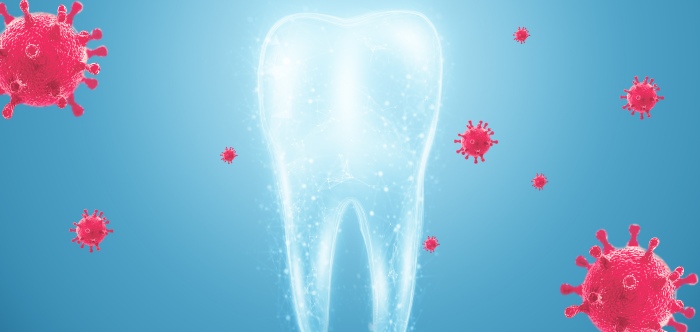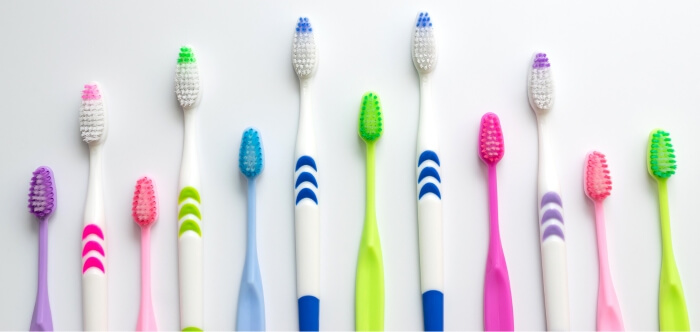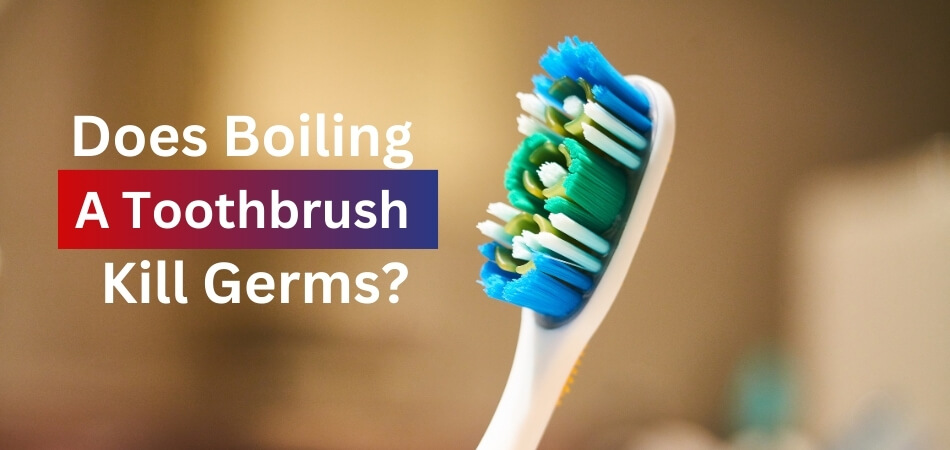Maintaining good oral hygiene is a cornerstone of overall health, and a critical part of that regimen involves keeping our toothbrushes clean. We’ve all heard about various methods to sanitize our trusty dental companions, but one question often arises: Does boiling a toothbrush kill germs effectively?
Yes, by boiling a small pot of water on your stove and dipping your toothbrush head into the rolling boil for at least three minutes, you can effectively eliminate most germs. It’s a straightforward and cost-effective method to ensure your toothbrush remains germ-free.
In this blog, we’ll delve into the science behind this practice, discuss its benefits, and provide you with easy-to-follow steps to make your toothbrush a germ-free warrior in your daily oral care routine. Let’s explore the power of boiling water in safeguarding your dental health.
Concept Of Germ-Killing and Sterilization
In the realm of hygiene, the concepts of germ-killing and sterilization hold paramount importance. Understanding how these processes work is crucial in maintaining a clean and safe environment.
Germ-killing involves the elimination of harmful microorganisms, such as bacteria and viruses, from surfaces and objects. This process disrupts their structure or renders them incapable of reproduction. Effective germ-killing methods often rely on heat, chemicals, or physical removal to reduce the microbial load and prevent the spread of diseases.

Sterilization, on the other hand, takes germ-killing to the highest level. It aims to eradicate all forms of life, including spores, on a surface or within an object. Commonly used in medical settings, sterilization methods include autoclaving, chemical disinfection, and radiation. Achieving sterility ensures that no pathogenic microorganisms survive, minimizing the risk of infection or contamination.
Both germ-killing and sterilization are integral to our daily lives, from disinfecting kitchen countertops to ensuring surgical instruments are germ-free. The choice of method depends on the level of cleanliness required and the object’s material. Whether we’re combating germs at home or in healthcare settings, these concepts are the cornerstones of a healthier, safer environment.
What are the Different Types of Toothbrush?
The world of oral hygiene offers a plethora of toothbrush options, each designed to cater to specific needs and preferences. Let’s explore the different types of toothbrushes available to help you make an informed choice for your oral care routine.

Manual Toothbrushes
Manual toothbrushes are the traditional and most commonly used type. They come in various bristle designs, including soft, medium, and hard bristles. They require manual effort for effective brushing and are available in a wide range of shapes and sizes.
Electric Toothbrushes
Electric toothbrushes have gained popularity for their ability to provide consistent and efficient brushing. They come with oscillating, rotating, or sonic brush heads and often feature built-in timers and pressure sensors to enhance the brushing technique.
Battery-Powered Toothbrushes
Battery-powered toothbrushes combine the convenience of manual toothbrushes with the added benefit of battery-operated vibrations or oscillations for improved cleaning. They are often a cost-effective alternative to fully electric models.
Bamboo Toothbrushes
Bamboo toothbrushes have gained traction as an eco-friendly alternative to plastic. They feature bamboo handles, which are biodegradable, and come with nylon or biodegradable bristles. Bamboo toothbrushes are an excellent choice for environmentally conscious individuals.
Orthodontic Toothbrushes
Orthodontic toothbrushes are specially designed to clean around braces, wires, and other orthodontic appliances. They typically have V-shaped bristle patterns and ergonomic handles to reach and clean challenging areas effectively.
Does Boiling a Toothbrush Kill Germs?
In the pursuit of optimal oral hygiene, one question often arises: Does boiling a toothbrush kill germs? Let’s delve into this topic to uncover the truth about using boiling water as a toothbrush sterilization method.

Boiling a toothbrush is an effective method to kill germs. Boiling water can destroy most harmful microorganisms, including bacteria and viruses. To use this method, simply bring a small pot of water to a rolling boil, and dip the head of your toothbrush in the boiling water for at least three minutes. This process should effectively eliminate the majority of germs present on the toothbrush.
However, consider the toothbrush material. Boiling is suitable for most toothbrushes with plastic or nylon bristles. Still, it may not be recommended for toothbrushes with delicate components, such as electronic toothbrushes with batteries or sensitive silicone bristles. For these types of toothbrushes, alternative cleaning and sterilization methods may be more appropriate.
How to Boil a Toothbrush Safely?
In our pursuit of optimal oral hygiene, it’s crucial not only to brush regularly but also to ensure the cleanliness of our toothbrushes. One effective method is boiling, but it must be done safely. Here’s a guide to safely and effectively boil your toothbrush for germ-free oral care.
Step 1: Gather Your Sterilization Tools
Start by assembling the necessary supplies: a dedicated pot for sterilization, clean water, and the toothbrush you want to sterilize. Using a designated pot ensures no cross-contamination from other substances.
Step 2: Fill the Pot with Clean Water
Pour clean, fresh water into the pot, ensuring there’s enough to fully immerse the toothbrush. For added effectiveness, you may consider adding a pinch of salt or a few drops of hydrogen peroxide to the water. These additives can enhance the sterilization process, although they are optional.
Step 3: Bring the Water to a Rolling Boil
Place the pot on the stove and heat it until the water reaches a rolling boil. A rolling boil is characterized by vigorous bubbling and indicates the water has reached a temperature that is optimal for sterilization.
Step 4: Carefully Immerse the Toothbrush
With the water at a rolling boil, carefully immerse the toothbrush head in the boiling water. Ensure the entire toothbrush, including the bristles, is fully submerged for thorough sterilization. While the toothbrush is in the pot, keep a close eye on it to prevent any accidental splashes or boil-overs.
Step 5: Boil for a Minimum of Three Minutes
Maintain the boil for at least three minutes. This duration is crucial for effectively killing germs. Once done, switch off the stove and allow the toothbrush to cool before resuming your oral care routine.
By following these five simple steps, you can safely and confidently sterilize your toothbrush, contributing to a healthier and more hygienic oral care regimen.
Alternate Ways to Keep Your Toothbrush Safe from Germs
Ensuring your toothbrush remains germ-free is vital for maintaining good oral health. While boiling your toothbrush is one option, there are several alternative ways to safeguard it from germs effectively.

Hydrogen Peroxide Rinse
Consider using a 3% hydrogen peroxide solution as a rinse for your toothbrush. After brushing, soak the bristles in hydrogen peroxide for a few minutes to help kill germs. Rinse thoroughly with water before use.
UV Toothbrush Sanitizers
Invest in a UV toothbrush sanitizer like the Bril UV toothbrush sanitizer, a device designed to use ultraviolet (UV) light to disinfect your toothbrush. Simply place your toothbrush in the sanitizer after use, and it will eliminate bacteria and viruses effectively. This convenient and modern solution ensures your toothbrush remains germ-free, promoting better oral hygiene.
Mouthwash Soak
Soaking your toothbrush bristles in an antimicrobial mouthwash for a few minutes can be an effective germ-fighting method. Rinse it thoroughly with water afterward to remove any residual mouthwash.
Store Properly
Ensure your toothbrush is stored upright and in an open-air environment, allowing it to dry between uses. Avoid covering it with a cap or in a closed container, as this can promote germ growth.
Regular Replacement
Replace your toothbrush or toothbrush head every 3-4 months, or sooner if bristles appear frayed. An old toothbrush with worn bristles is less effective at cleaning and can harbor more germs.
By incorporating these alternative methods into your oral hygiene routine, you can effectively keep your toothbrush free from harmful germs and maintain better overall oral health.
Pros and Cons of Boiling a Toothbrush to Kill Germs
When it comes to maintaining oral hygiene, one common practice is boiling a toothbrush to kill germs. However, it’s essential to weigh the pros and cons of this method before adopting it into your dental care routine.
Pros of Boiling a Toothbrush
- Effective Germ Elimination: Boiling effectively kills most germs and bacteria present on the toothbrush, reducing the risk of oral infections.
- Affordability and Accessibility: This method is cost-effective and requires only a pot and water, making it accessible to most people.
- Simplicity and Convenience: Boiling is a straightforward process suitable for various toothbrush types, making it easy to incorporate into your routine.
- No Chemicals Required: Unlike some alternatives, boiling doesn’t involve the use of additional chemicals or disinfectants.
- Oral Health Benefits: Regularly sterilizing your toothbrush can contribute to improved oral health, minimizing the risk of dental issues.
- Reduction of Allergens: Boiling can help reduce allergens present on the toothbrush, beneficial for individuals with allergies.
- Suitable for Emergency Situations: In situations where other sterilization methods are unavailable, boiling can serve as a reliable emergency option.
Cons of Boiling a Toothbrush
- Compatibility Concerns: Boiling may not be suitable for toothbrushes with delicate components, potentially causing damage.
- Limited Effectiveness: While it kills many germs, it may not eliminate all types, such as viruses.
- Access to Heat Source: Boiling requires access to a stove or heat source, which may not always be available.
Conclusion
In the pursuit of a cleaner and healthier smile, the question, “Does boiling a toothbrush kill germs?” has been answered affirmatively. Boiling a toothbrush in a small pot of water for a minimum of three minutes is a cost-effective and practical method to effectively eliminate most germs, ensuring your oral hygiene remains top-notch.
But our exploration hasn’t stopped there. We’ve ventured into the diverse world of toothbrush options, from manual to electric, and even environmentally friendly bamboo brushes. We’ve also delved into alternative germ-fighting methods, including UV toothbrush sanitizers like the Bril UV toothbrush sanitizer, mouthwash soaks, and proper storage practices.
By considering the pros and cons of these methods, you can make informed decisions about your oral hygiene routine. So, as you navigate the path to a cleaner and healthier smile, remember that boiling a toothbrush is just one piece of the puzzle, but an essential one at that.






